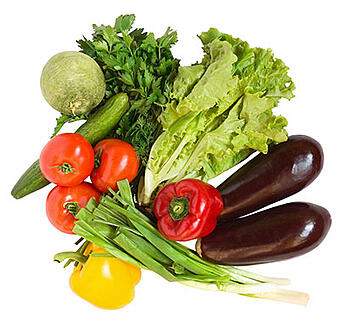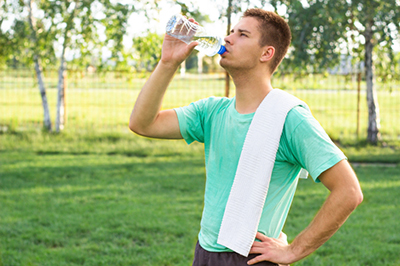 We have all heard the phrase that an apple a day keeps the doctor away, but who knew that eating a balanced diet would also make you more productive at work? A study conducted by Brigham Young University and published in Population Health Management Journal, found that 19,000 employees from three large companies with unhealthy diets, were 66 percent less productive than those who ate whole grains, fruits, and vegetables.
We have all heard the phrase that an apple a day keeps the doctor away, but who knew that eating a balanced diet would also make you more productive at work? A study conducted by Brigham Young University and published in Population Health Management Journal, found that 19,000 employees from three large companies with unhealthy diets, were 66 percent less productive than those who ate whole grains, fruits, and vegetables.
So, how can you be a more productive employee? Try these three simple ways to eat a more balanced diet. Then get ready to impress your boss!
Whole-Grain Goodness
Swap out your old rice, pasta, bread, and cereal for grains that are higher in fiber and are less processed. Brown and wild rice are excellent alternatives to white rice. Whole-wheat pasta, couscous, quinoa, millet, and oats are more whole-grain options to incorporate into your diet. When it comes to breads and cereal, check the label. Choose options that have at least 3 grams of fiber per serving. Check out the Whole Grains Council website for more information.
Fabulous Fruits
Most people need three pieces of fruit per day to meet their individual requirements. This can easily be done by incorporating a fruit into your morning cereal or oatmeal, grabbing a piece of fruit for a quick and portable snack, or having a bowl of sweet fruit after dinner for dessert. The vitamins, minerals, antioxidants, and fiber in fruit are all great reasons to include them in your diet.
Vary Your Veggies
One of the most challenging food groups to get into your diet, but also one of the best ones for you, is vegetables. It can be difficult to meet that 4 to 5 recommended servings per day, so how can you get these in to help balance your diet? One thing is to make sure that you are spreading them out throughout the day by including a vegetable serving at lunch and snack time. At lunch, grab portable veggies such as baby carrots, cherry tomatoes, mini bell peppers, and sugar-snap peas to add some variety and crunch along with your typical sandwich. Or nibble on veggies with a hummus dip for an afternoon snack. Make it a goal to try one new and different vegetable each week!
Kale has become a popular vegetable choice these days, primarily because of its health benefits. It is an excellent source of antioxidant vitamins A, C, and K -- and sulphur-containing phytonutrients. Here are some recipes for enjoying it.
If you are interested in having your questions answered during a personal nutrition consultation, please contact Melanie Roberts at mroberts@nifs.org or (317) 274-3432, ext 217. Learn more about Nutrition and Wellness services at NIFS.
This blog was written by Angie Sheetz, Registered Dietitian. Read more about the NIFS bloggers.


 triathlon. When you finished your first race and looked at the breakdown of the times for each event, you probably noticed the T1 and T2 times. T1 is the time it took you to go from swimming to the bike, and T2 is the time it took you to go from the bike to the run. Like the swimming, biking, and running training, the transitions should be trained as well. But don’t think you need to spend hours perfecting getting from one event to the next. A good transition can simply be added to the other brick training sessions.
triathlon. When you finished your first race and looked at the breakdown of the times for each event, you probably noticed the T1 and T2 times. T1 is the time it took you to go from swimming to the bike, and T2 is the time it took you to go from the bike to the run. Like the swimming, biking, and running training, the transitions should be trained as well. But don’t think you need to spend hours perfecting getting from one event to the next. A good transition can simply be added to the other brick training sessions.

 In
In 




 Dehydration can lead to heat illnesses, so it is important to stay hydrated and drink water even if you do not feel like you are thirsty. Read more about this in our
Dehydration can lead to heat illnesses, so it is important to stay hydrated and drink water even if you do not feel like you are thirsty. Read more about this in our